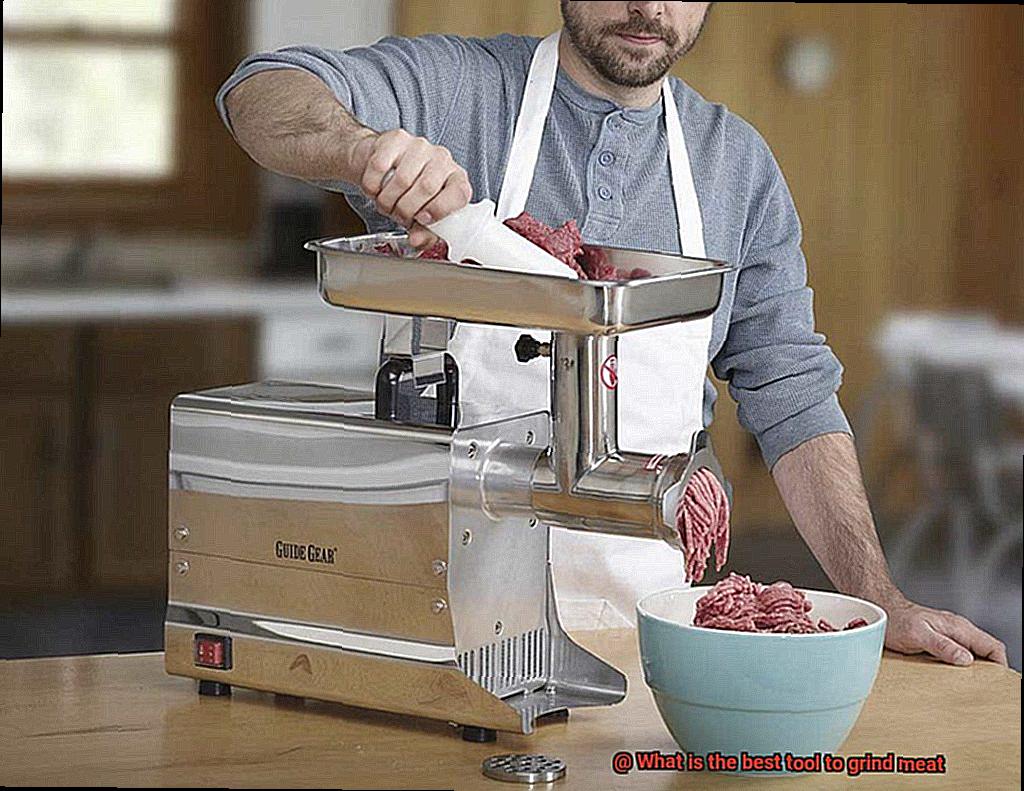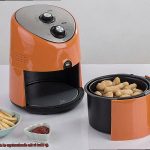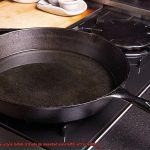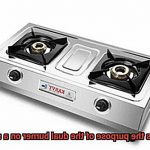Hey there meat lovers. Are you tired of settling for pre-packaged ground meat that lacks flavor and freshness? Well, fear not because the solution is simple – grind your own meat. By doing so, you’ll be able to customize the texture and quality of your meat exactly to your liking. But with so many options out there, how do you know which tool to use?
That’s where we come in. In this blog post, we’ll dive into the world of meat grinders and help you determine whether a manual or electric grinder is right for you. We’ll also dish out some insider tips on what features to look for when selecting the perfect grinder that will give your meat dishes that extra oomph.
Whether you’re a seasoned pro or just starting out in the kitchen, we’ve got everything you need to know about finding the best tool to grind meat. So get ready to elevate your culinary game and impress your taste buds like never before.
Contents
What is Grinding Meat?
Grinding meat is a fundamental process used in preparing a variety of mouthwatering dishes. The method involves breaking down large chunks of meat into smaller, more manageable pieces that are easier to cook, chew, and digest. There are several ways to grind meat, including using a food processor, meat grinder, or stand mixer with a meat grinder attachment.
While a food processor is versatile and can be used to grind meat, it may not produce the desired texture and consistency. This is because the blades in a food processor are not as sharp as those in a meat grinder, which can result in unevenly ground meat.
Meat grinders are specifically designed for grinding meat and come in both manual and electric versions. Manual meat grinders require physical effort to turn the crank, while electric meat grinders use electricity to power the grinding process. Meat grinders come with different size plates that can be used to create various textures of ground meat.
If you already own a stand mixer, you can use a meat grinder attachment to grind your meat directly into the mixing bowl. This is an incredibly convenient option for those who want to grind their own meat at home.
Choosing the right tool for grinding meat ultimately depends on personal preferences and needs. If you plan on grinding large quantities of meat frequently, investing in an electric meat grinder may be the best option. However, if you only plan on grinding small amounts of meat occasionally, a manual grinder or food processor may suffice.
When it comes to grinding meat, it’s essential to use the correct type of meat and keep it cold during the process to prevent bacterial growth. Ground beef is typically made from tougher cuts like chuck or round, while ground pork comes from fattier cuts like shoulder or belly.
Grinding your own meat offers you more control over the texture and fat content. You can choose leaner cuts of beef for a healthier ground beef option or grind the meat less finely for a coarser texture. The benefits of grinding your own meat are endless, from producing tastier meals to saving money.
The Different Tools for Grinding Meat
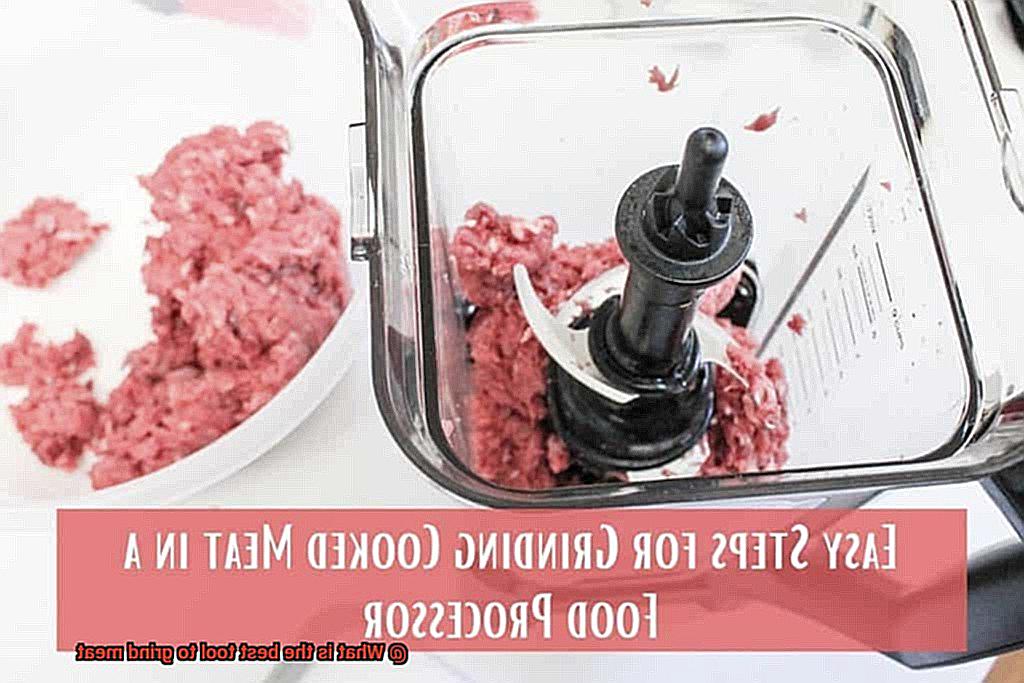
Choosing the right tool for the job can be daunting. Fear not, as an expert on the topic, let me guide you through the different tools available and their unique advantages and disadvantages.
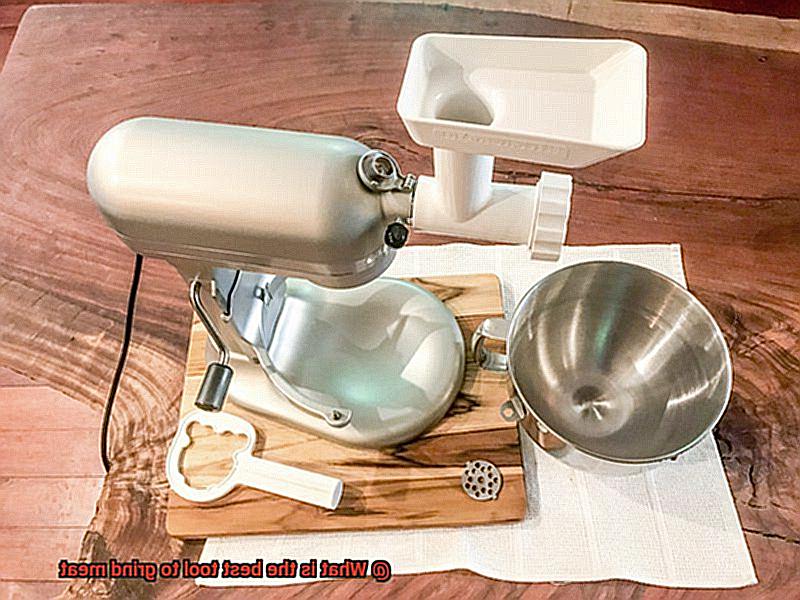
Manual Meat Grinders:
Manual meat grinders are the traditional way of grinding meat. These affordable, easy-to-use devices come in various sizes and designs, but they all work on the same principle: feed meat into a hopper, turn a crank or handle to rotate a set of blades, and ground meat comes out the other end. Manual meat grinders are perfect for small batches of meat and won’t overwork or heat up the meat like electric grinders can. However, they require some elbow grease to operate and can be time-consuming.
Electric Meat Grinders:
Electric meat grinders are a popular option as they are faster and more efficient than manual grinders. They come in a range of sizes and designs, from small home models to large commercial units. Electric grinders are ideal for grinding large quantities of meat quickly and efficiently. However, they can be expensive and may overheat or overwork the meat if not used properly.
Stand Mixer Attachments:
For those who already own a stand mixer like a KitchenAid, adding a meat grinder attachment can be incredibly convenient. Stand mixer attachments allow you to grind meat directly into your mixing bowl without having to switch between tools. They’re also relatively affordable and easy to use. However, stand mixer attachments may struggle with tougher cuts of meat and may not be as efficient as dedicated meat grinders.
Specialty Tools:
While not specifically designed for grinding meat, food processors or immersion blenders can work in a pinch for smaller quantities of meat. These tools may not produce consistent results and can be difficult to clean, but they are still an option to consider.
Advantages and Disadvantages of Using a Food Processor
Well, look no further than a food processor. As an expert on the topic, I’m here to highlight the advantages and disadvantages of using a food processor to grind your meat.
Firstly, let’s talk about the advantages. A food processor is a versatile kitchen tool that can be used for more than just meat. It can also chop vegetables, make sauces, and create delicious dips. And when it comes to grinding meat, a food processor saves you time compared to doing it manually. Plus, it produces a consistent texture which is crucial for even cooking. Additionally, food processors are straightforward to use and easy to clean – no complicated assembly required.
However, it’s important to keep in mind the disadvantages as well. Food processors are typically designed for small to medium quantities of meat. Overloading the machine with large amounts of meat may cause it to break down. Moreover, grinding meat in a food processor can cause heat buildup which can affect the texture and taste of the meat. The blades in a food processor can also become dull with frequent use, leading to decreased effectiveness in grinding meat. Finally, the cost may be an issue as food processors can be expensive and may not be worth the investment for someone who only occasionally grinds meat.
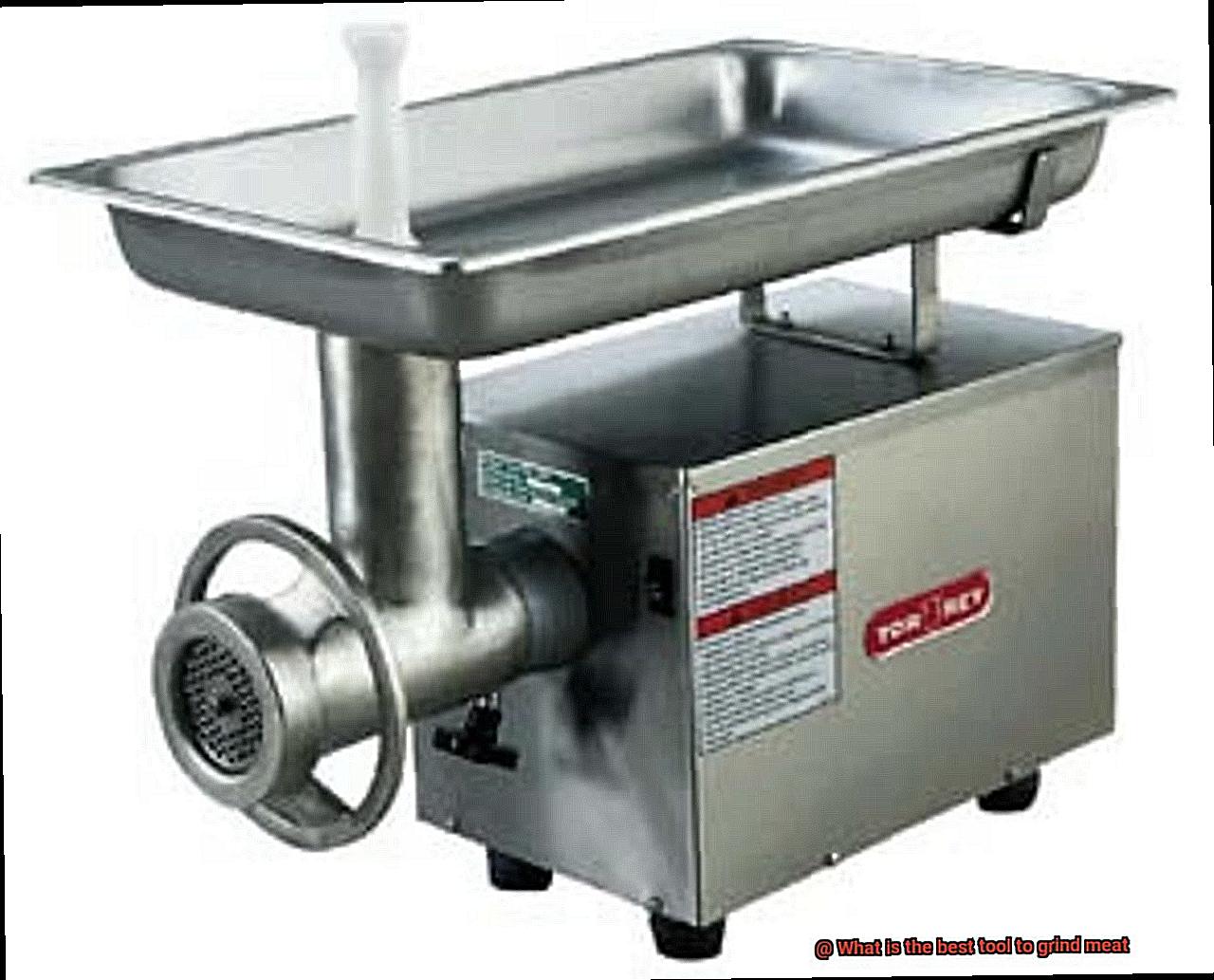
So what’s the verdict? A food processor is an excellent investment if you’re looking for a versatile kitchen tool that can handle small to medium quantities of meat and other tasks. However, if you frequently grind large amounts of meat or are on a budget, other options like electric grinders or stand mixer attachments may be more suitable.
Advantages and Disadvantages of Using a Manual Meat Grinder
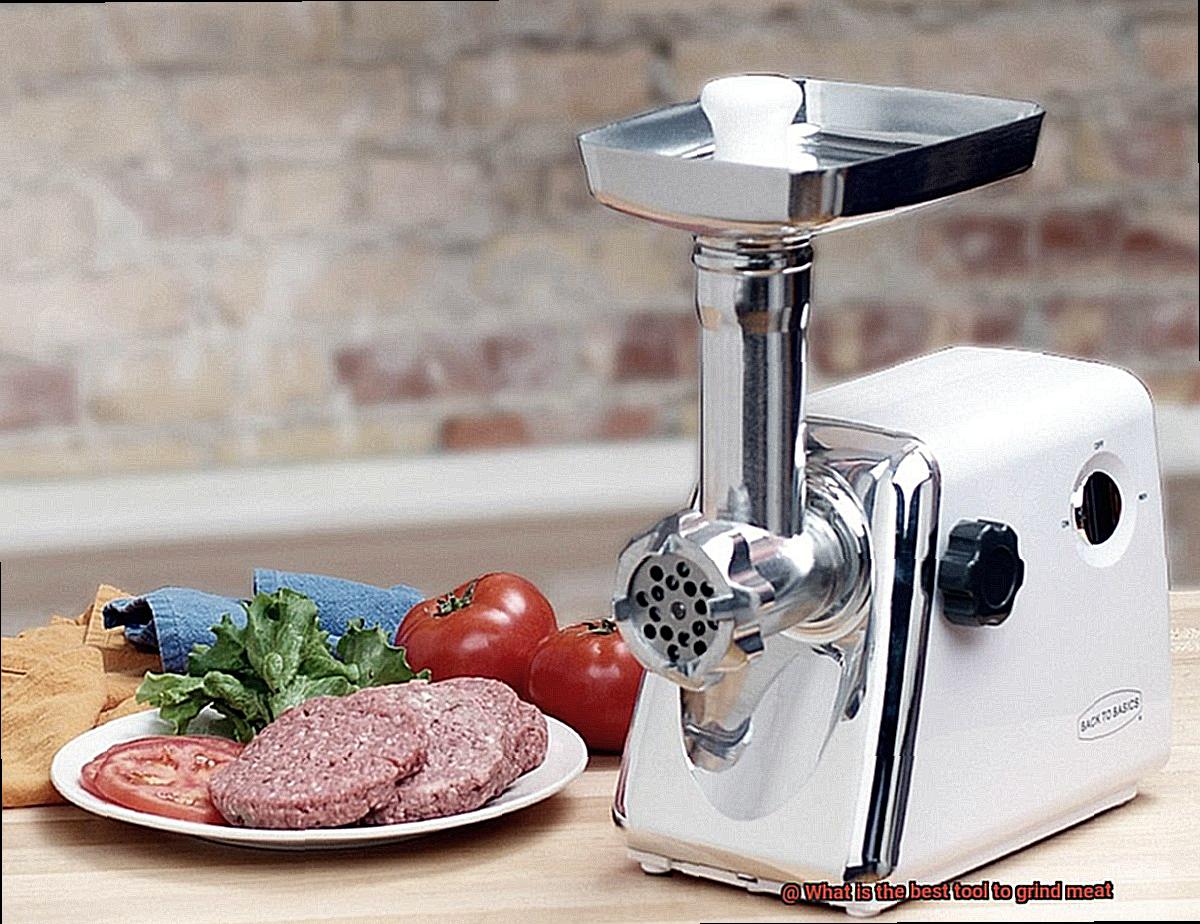
While electric meat grinders are more prevalent in today’s market, there are still many advantages to using a manual meat grinder. In this article, we’ll explore both the advantages and disadvantages of manual meat grinders so that you can decide if this method is right for you.
Let’s start with the benefits. One of the most significant advantages of manual meat grinders is their portability. These machines are small, lightweight, and easy to carry around, making them ideal for outdoor activities like camping or hunting trips where electricity may not be available. Another advantage is their cost – manual meat grinders are generally less expensive than electric ones, which makes them an excellent option for those who don’t want to break the bank on a machine. Additionally, manual meat grinders give you complete control over the grinding process, allowing you to adjust the handle to choose the speed and texture of the grind. Lastly, these machines are easy to disassemble and clean due to their simple design.
However, there are also some drawbacks to using manual meat grinders. One disadvantage is that grinding meat manually can be tiring and time-consuming, especially if you have a large amount of meat to grind. Additionally, manual meat grinders have a limited capacity, which means you’ll need to reload the machine frequently if you want to grind a lot of meat. Achieving a consistent grind with a manual meat grinder can also be challenging, especially when dealing with tougher cuts of meat. Finally, the constant cranking motion required to grind the meat can cause hand fatigue and discomfort.
Overall, whether or not a manual meat grinder is right for you depends on your specific needs and preferences. If you only need to grind small amounts of meat or want a low-cost option that gives you complete control over the grinding process, then a manual meat grinder is an excellent choice. However, if you need to grind a lot of meat regularly and want more consistency, then an electric grinder may be a better option.
Advantages and Disadvantages of Using an Electric Meat Grinder
As an expert on the advantages and disadvantages of this kitchen gadget, let’s explore why it could be a game-changer.
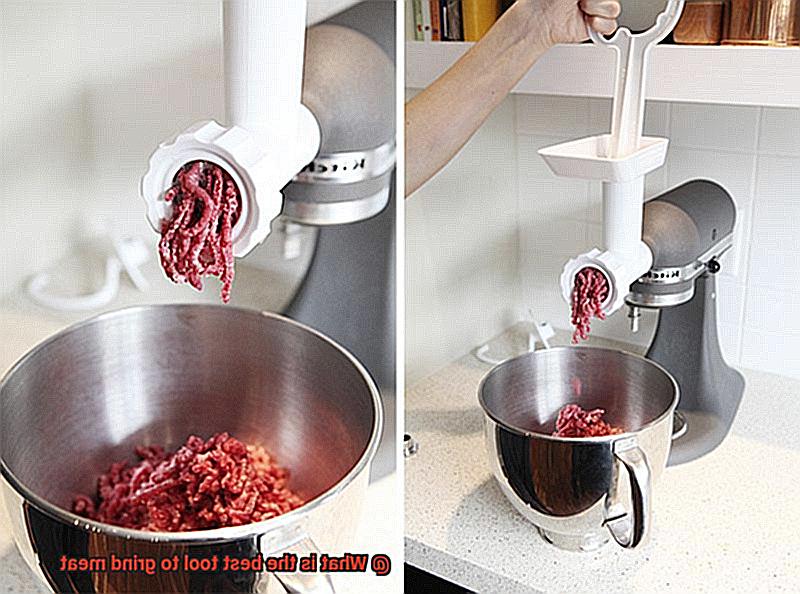
One of the most significant advantages of an electric meat grinder is convenience. With minimal effort required, this gadget can grind meat quickly and efficiently, making meal prep a breeze. Say goodbye to sore arms or wrists from cranking a manual grinder.
In addition to convenience, an electric meat grinder saves time by handling large quantities of meat in a short amount of time. Plus, with consistent results every time, you’ll never have to worry about unevenly ground meat again. This gadget also provides versatility, as it can grind different types of meat, including game meats like venison or elk.
Safety features are another benefit of electric meat grinders. They come equipped with safety features designed to prevent accidental injuries during use. You can rest easy knowing that your family and yourself are safe while using it.
However, there are some disadvantages to consider before purchasing an electric meat grinder. The cost may be higher than a manual one, and the noise level may be a concern for some users. Additionally, regular cleaning and maintenance are necessary to ensure optimal performance and longevity.
Size and storage may also be an issue for those with limited space in their kitchens. Finally, because electric meat grinders consume electricity, frequent use can increase your energy bill.
Advantages and Disadvantages of Using a Stand Mixer with a Meat Grinder Attachment
A stand mixer with a meat grinder attachment might be just what you need. As an expert on this topic, I have compiled a comprehensive list of the advantages and disadvantages of using this versatile kitchen tool.
Advantages:
- Versatility: One of the most significant advantages of using a stand mixer with a meat grinder attachment is its versatility. You can use it to grind meat, make sausages, and even pasta all with one machine. With this tool in your arsenal, you won’t need to buy multiple appliances to perform different tasks.
- Time-saving: A stand mixer with a meat grinder attachment can also save you time. It’s much faster than manually grinding meat, which means you can spend less time preparing ingredients and more time cooking delicious meals.
- Consistency: Another advantage is that it produces consistent ground meat every time. This is important for recipes that require an even distribution of fat and lean meat. With this tool’s consistency, your dishes will turn out better and more flavorful every time.
- Durability: Stand mixers with meat grinder attachments are built to last. They’re designed with high-quality materials that ensure they can withstand regular use without breaking down easily.
Disadvantages:
- Cost: One of the main disadvantages of using a stand mixer with a meat grinder attachment is the cost. It can be expensive, especially if you’re not planning to use it frequently. However, if you love to cook and experiment in the kitchen, it might be worth the investment.
- Size: Another disadvantage is its size. Stand mixers with meat grinder attachments can take up a lot of counter space, which may not be ideal for smaller kitchens. If you have limited counter space, you might want to consider other options.
- Limited quantity: While stand mixers with meat grinder attachments are great for small batches of ground meat, they may not be the best option if you need to grind large quantities. These machines can only handle small amounts of meat at a time, which can be time-consuming if you have a lot of meat to grind.
- Cleaning: Cleaning can be a bit of a hassle since it involves taking apart the attachment and cleaning each part separately.
Tips for Choosing the Best Tool to Grind Meat
Grinding meat at home can be a rewarding experience, but choosing the right tool to do so can be overwhelming. With so many options available in the market, it’s important to consider certain factors to ensure that you get the most out of your investment and achieve the desired results every time. Here are five factors to consider when choosing the best tool to grind meat:
Type of Meat
Different types of meat have different textures, fat content, and toughness. It’s important to consider the type of meat you will be grinding before selecting a grinder. If you plan to grind tougher cuts of meat like beef or pork, an electric grinder with a powerful motor would be ideal. On the other hand, if you’re grinding softer meats like chicken or turkey, a manual grinder or food processor may suffice.
Capacity
The amount of meat you plan to grind at once should also be a factor in choosing a grinder. If you’re grinding small amounts for personal use, a manual grinder or food processor may be sufficient. However, if you’re planning to grind large quantities for commercial purposes or meal prep, an electric grinder with a large capacity would be more suitable.
Ease of Use
Some grinders can be more complicated to use than others. If you’re new to grinding meat, consider a tool that is easy to assemble and operate. Manual grinders may require more effort, but they are usually straightforward to use. Electric grinders may have more features like different speeds and settings that can take some time to learn.
Cleaning and Maintenance
No matter what tool you choose, it will need regular cleaning and maintenance. Look for grinders that are easy to disassemble and clean thoroughly. Some electric grinders have dishwasher-safe parts for added convenience.
Budget
Meat grinders come in different price ranges depending on their features and capabilities. Consider your budget when selecting a grinder that meets your needs. Manual grinders are typically more affordable, while electric grinders can range from moderately priced to quite expensive.
Js73-jseLnI” >
Conclusion
In conclusion, grinding your own meat is a game-changer when it comes to customizing the texture and quality of your meat dishes. With so many options available in the market, selecting the right tool to grind meat can be overwhelming. However, by considering factors such as the type of meat, capacity, ease of use, cleaning and maintenance, and budget, you can choose the best tool to meet your needs.
Manual meat grinders are perfect for small batches of meat and won’t overwork or heat up the meat like electric grinders do. On the other hand, electric meat grinders are ideal for grinding large quantities of meat quickly and efficiently. Stand mixer attachments allow you to grind meat directly into your mixing bowl without having to switch between tools. In a pinch or for smaller quantities of meat, food processors or immersion blenders can work wonders.
It’s crucial to use the correct type of meat and keep it cold during the process to prevent bacterial growth. Ground beef typically comes from tougher cuts like chuck or round while ground pork comes from fattier cuts like shoulder or belly.
Grinding your own meat gives you more control over texture and fat content. You can choose leaner cuts of beef for healthier ground beef options or grind the meat less finely for a coarser texture. The benefits of grinding your own meats are endless – from producing tastier meals to saving money.

